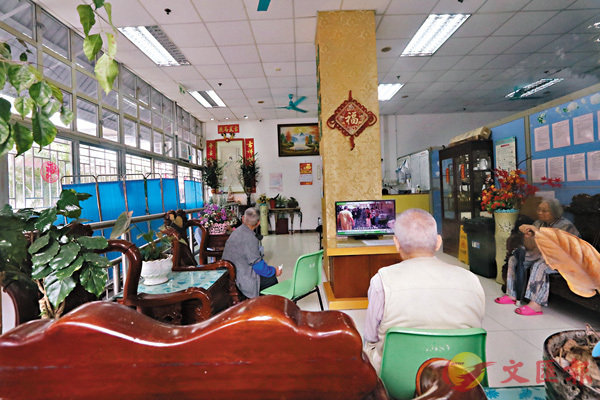 ■在市場購置物業,可令服務地點更接近長者。 資料圖片
■在市場購置物業,可令服務地點更接近長者。 資料圖片【原文】政府在財政預算案建議撥款200億元購買物業作社福設施,勞工及福利局昨日在提交立法會的文件披露細節,計劃分3年於全港18區營運社福設施158個。本港對幼兒中心、長者鄰舍中心等社福設施需求殷切,政府購置私人物業滿足社福服務所需,具有效率高、更靈活的特點,有利保持服務穩定,值得支持。期待立法會盡快通過撥款,讓市民早日得享福利。
勞工及福利局向立法會提交文件顯示,計劃中的158個社福設施,包括長者鄰舍中心48間、幼兒中心28間、長者日間護理中心15間等,其中將於每區增設幼兒中心最少1間。這些設施中,西貢、元朗等年輕家庭較多的地區,將設置較多幼兒中心;中西區及東區等人口較老化的地區則設較多的安老服務設施,顯示當局的選址經過周詳考慮,有針對性地解決現時社福設施不足的問題。
市民對日間幼兒中心、長者鄰舍中心等需求殷切,但因為現有設施供應不足,導致申請者輪候時間愈來愈長。以幼兒中心為例,有營運此類中心的社福機構表示,現時的輪候人數是服務名額的5倍之多。
這次政府對社福設施建設作出的較大型規劃,是必須和合理的安排,符合市民利益。本港早有由政府購置物業作社福設施的先例,1995到1998年間,社會福利署曾購入63個物業作社福服務之用。
政府在私人市場購置物業作社福設施有明顯好處:一是見效快,當局預料7月向立法會財委會申請撥款,最快明年第一季已可購置首批物業,明年底就可以投入運作,最遲一批預計於2023年首季購置。若撥地興建,需時動輒逾10年,兩相比較,購置物業可謂立竿見影。二是穩定,過往一些租用物業的社福設施,經常因業主大幅加租、不再續租而無法繼續營運,給經營者、服務使用者帶來困擾,由政府購置物業,可大大提高服務的連續性,長期更符合成本效益。三是靈活,對長者服務需求殷切的地區,多在老區,很難覓地興建社福設施,在市場購置物業,可令服務地點更接近長者。
當然,社會上有聲音擔心,政府直接購置物業,或會推高樓價。但這次政府購置的是非住宅物業,而且每年購置的面積只佔市場成交量的相當小部分,對樓價的影響微乎其微。政府亦已設立機制,確保購置物業價錢合理,公帑妥善運用。
亦有聲音批評,政府提交立法會的購置物業清單只有區域分佈,不夠具體。問題是,如果提供太具體的購置清單,容易引起潛在物業坐地起價,現時的做法更符合商業市場慣例。政府計劃一次過向立法會申請撥款,避免逐次申請錯過購置時機,也是可以理解的做法。 (摘錄自香港《文匯報》社評4-6-2019)
Government's plan to buy properties for welfare facilities worthy of support
【譯文】The Legislative Council (Legco) papers submitted by the Labour and Welfare Bureau yesterday revealed that 158 new welfare facilities will be established across Hong Kong's 18 districts over 3 years. The plan earmarked HK$20 billion to purchase private properties for welfare facilities, and was first announced by the government as part of the 2019-20 budget. Buying up private properties and converting them to welfare facilities is an efficient, flexible and stable way to meet social welfare demands. Given that Hong Kong is in dire need of new childcare centres and elderly activity centres, the government's proposal is worthy of support. It is hoped that the Legco will pass the funding as soon as possible, so that the public can enjoy the benefits earlier.
According to the Labour and Welfare Bureau's papers to the Legco, of the 158 planned social welfare facilities, there will be 48 elderly activity centres, 28 childcare centres, and 15 elderly day care centres etc. Each of the 18 districts of Hong Kong will have at least one newly established childcare centre. For districts that have a greater number of young families, such as Sai Kung and Yuen Long, more childcare centres will be created. As for districts that have a comparatively older population, such as the Central and Western District and the Eastern District, more elderly service centres will be established. This shows that the proposed sites for new facilities have been carefully considered by the authorities This shows that the authorities have carefully selected each site in order to address the lack of welfare facilities in a focused manner.
There is a huge demand for child day care centres and elderly activity centres in local communities, but an insufficient number of said facilities means that applicants have to endure long waiting time. For instance, social welfare organisations that operate childcare centres have pointed out that the number of applicants waiting is five times the overall service capacity. The government's large-scale social welfare initiative is therefore reasonable and necessary, reflecting the public's best interests. Also, there were precedents for the government to purchase private properties for social welfare use, as the Social Welfare Department bought 63 venues between 1995 to 1998 for social services.
There are clear advantages for the government to adopt this approach. First, it is expedient. Aimed to secure funding approval from the Legco Finance Committee in July, the government anticipates that the first batch of properties could be purchased in the first quarter of 2020 at the soonest, with the planned facilities commencing by the end of 2020. The last batch would be purchased by the first quarter of 2023. If the government were to adopt another approach and seek land to build from scratch, it would take at least 10 years. When comparing the two, it is obvious that the government's current approach is more expedient and pragmatic. Second, it provides stability. Social welfare facilities operating on rented premises are often forced to close down due to landlords either increasing the rent drastically or terminating tenancy agreements. It has caused great nuisance to both service operators and users. If the facilities are operated on government-owned premises, these community welfare services will be more cost effective in the long run. Service continuity will also be greatly enhanced. Third, it is more flexible. Communities that are in dire need for elderly care services are usually located in older parts of the city where land for development is scarce. Purchasing properties from the private market can ensure that the services are in proximity of elderly users.
It is understandable that some may have concerns over a possible surge in private property prices due to government involvement. However, as the government's plan only targets non-residential properties, and that the overall area purchased per year is only a fraction of the overall stock, the impact on the real estate market is minimal. A mechanism has also been put in place in order to ensure that the prices are reasonable and the use of public funds optimised.
Some also criticised that the list of purchases submitted to the Legco lacked details, showing only the regional distribution.
However, if a detailed list of targeted properties is drawn and submitted to the Legco, it is very likely that some landlords would take the chance to effect a price hike. The government's current approach is more consistent with market practice in Hong Kong.
It is also a reasonable move to seek one-off funding approval from the Legco, as the government can avoid the risk of missing any market opportunities due to separate applications for funding.■Jeffrey Tse (ywc_jeffrey@hotmail.com)
Exercise
1. 立法會財務委員會
2. 勞工及福利局
3. 社會福利署
4. 財政司司長
5. 政務司司長
Answer
1. finance committee of the Legislative Council
2. Labour and Welfare Bureau
3. Social Welfare Department
4. Financial Secretary
5. Chief Secretary for Administration

